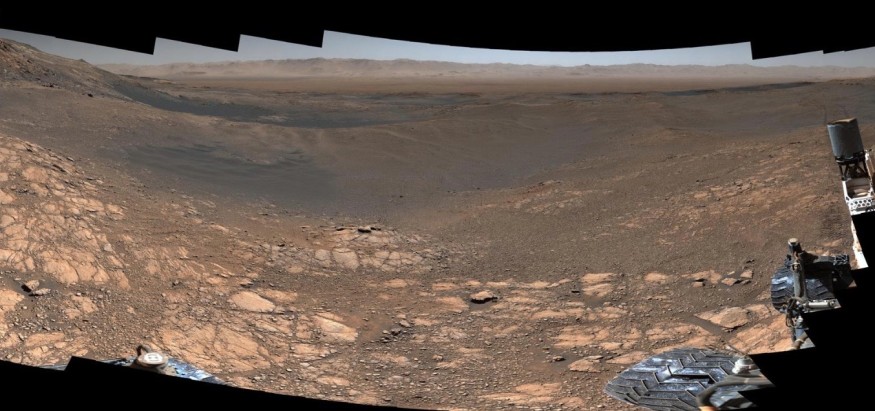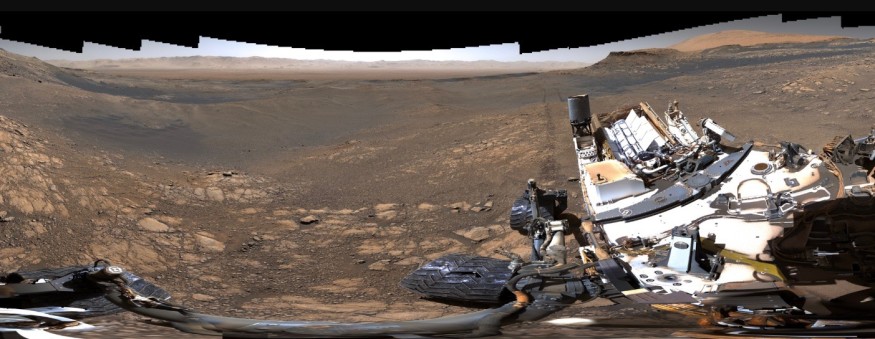
While everybody's celebrating Thanksgiving, NASA's Curiosity rover has captured its highest-resolution ever yet of the red planet's surface between November 24 to December 1, 2019. It is a 1.8-billion pixel panorama and a composite of 1,000 photos snapped between those dates.
Curiosity project scientist Ashwin Vasavada, of NASA's Jet Propulsion Laboratory (JPL) in Pasadena, California said, "While many on our team were at home enjoying turkey, Curiosity produced this feast for the eyes."
It is the first time during the mission that NASA has dedicated its operations to a stereo 360-degree panorama. The photos were snapped using the telephoto lens on Curiosity's Mast Camera (MastCam). It was pre-programmed by the scientists to photograph in advance between noon and 2 pm local Mars time each day to ensure consistent lighting conditions.

They also released a second panorama with the rover in it which like the first one spotlights the Glen Torridon, a region on the flanks of Mars' 3.4-mile-high (5.5 kilometers) Mount Sharp that the Curiosity rover has been exploring recently. This composite image is a lower resolution than the first one sporting "only" 650 million pixels using the Mastcam.
These composite photos are zoomable and you may get the full experience in these photos via JPL here.
The Mastcam used its telephoto lens to create this panorama and relied on its medium-angle lens to create a lower-resolution that includes the rover's deck and a robotic arm. It was built and operated by Malin Space Science Systems in San Diego.
NASA's JPL is a division of Caltech that manages the Mars Science Laboratory mission for the agency's Science Mission Directorate in Washington and who also built the Curiosity rover.
See Also: Elon Musk to US Military, "Innovate Now or Risk Being Second Place"
Curiosity rover is the most ambitious Mars mission yet flown by NASA which landed on Mars last 2012 with a primary mission to find out if Mars is, or was, suitable for life. Of course, learning its environment also is one of the reasons.
It celebrated its 2,000 sols (Mars day) last March 2018. The car-sized robot soon found that the Gale crater-where it landed in 2012, hosted a habitable lake-and-stream system in the ancient past. From there it traveled to Aeolis Mons or colloquially called Mount Sharp. It has found extensive evidence of past water and geological on the planet during its exploration there.
When it reached to Mount Sharp, the nuclear-powered rover has been climbing through rocks and mountain's foothills, reading from Mars' long-ago transition from the relatively warm and wet planet to the planet we know today as a cold desert.
Aside from the first two missions of Curiosity that are mentioned above, it also aims to characterize the geology of Mars and to prepare for human exploration. These goals are closely linked to each other; for example, learning the climate of the red planet will also help determine whether humans can safely explore its surface.
Although it could take more years before humans may make it to Mars, this could be the next big thing to being there. Panoramas like these are like the window to another world. Even after 7 years, Curiosity is not done making journeys yet.
© 2025 ScienceTimes.com All rights reserved. Do not reproduce without permission. The window to the world of Science Times.










